


See a selection of natural Topaz Crystals
MINERALMINERS.COM® - Your Personal 'Link' Direct to the Topaz Mines!TM



See a selection of natural Topaz Crystals
Topaz Information On This Page:
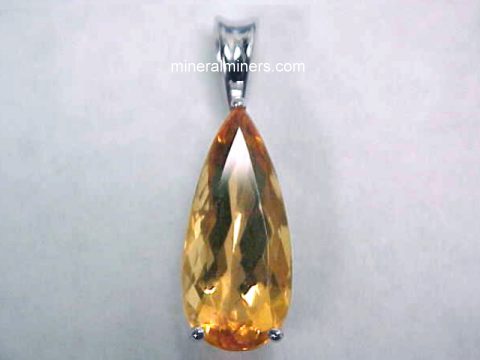
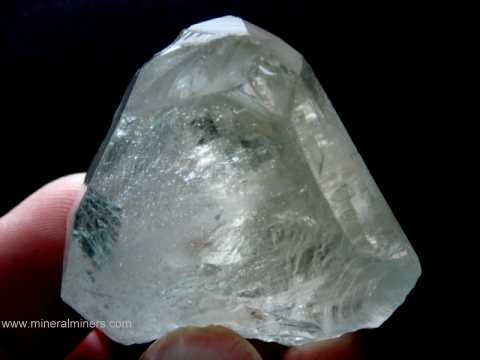
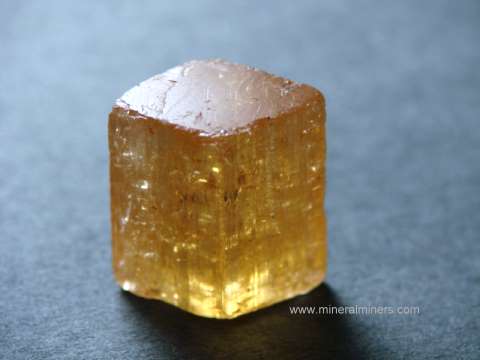
Topaz (Al2SiO4(F,OH)2) is an aluminum fluorosilicate. It most often occurs colorless, but can occur naturally in a variety of colors such as pale blue topaz, golden topaz, yellow topaz and brown topazes. Much more rare is the natural color Imperial Topaz with orange, pink, red or violet tones. The colors in topaz are mainly the result of color centers, which are sometimes affected to some extent by variations in the amounts of F,OH and minor impurities present, with the exception of the natural pink, red and violet tones in imperial topaz crystals which are due to chromium impurities in the topaz crystal structure. Color centers are not fully understood, but it can be said that they are created by radiation and destroyed (reversed) by heating or in some cases by exposure to light.
These color causing 'color centers' can occur and be reversed by natural irradiation and heating processes, resulting in the variety of colors exhibited by natural color topazes, or they can be manipulated by artificial means. More than 99.9% of all blue topaz gems on the market today have undergone an irradiation treatment to produce their blue color.
Some color centers in topaz are stable until heated hundreds of degrees while others are very unstable, fading within a few days merely by exposure to sunlight. The natural color of the yellow to 'sherry'-colored to brown topaz crystals from the Thomas Range in Utah, USA often exhibit this 'fast fading' phenomenon. Yellow to 'sherry'-colored to brown topaz crystals from some other locations do not fade when exposed to sunlight, indicating a light stable color center.
Much colorless topaz becomes a brownish-green color when irradiated. Subsequent exposure to light or heat will usually cause the brown portion of the color to fade leaving a blue color that is stable to light. Additional heating will cause this blue color to fade and the topaz will become colorless once again.
Some brown topazes that contain chromium impurities will become pink to violet upon heating. These colors are stable to light and this process can be reversed by subsequent irradition.
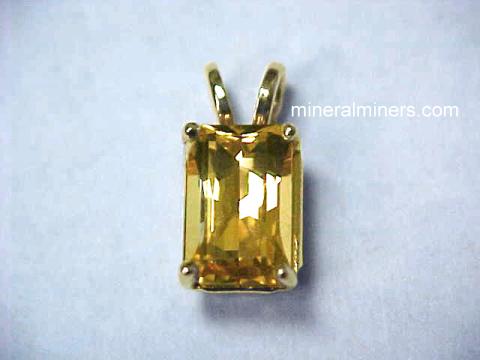
Topaz is thought to form from fluorine bearing gases given off during the later stages of solidification in acidic igneous rocks, occuring in cavities and fissures within rhyolites and granites, and also in granitic pegmatites where it is commonly associated with quartz, microcline and muscovite. Topaz is also found sometimes occuring in pegmatites together with tourmaline, aquamarine, kunzite and apatite.
Topaz also occurs in metamorphic rocks by fluorine metasomatism in greisens and quartzites associated with fluorite, zinnwaldite mica, corundum and rutile. It also occurs (rarely) in schists.
Topaz appears in hypothermal ore deposits associated with cassiterite, hematite, wolframite and gold.
Due to topaz's hardness, it is often found in eluvial and alluvial deposits. Topaz is characterized by its high specific gravity, hardness, crystal habit and cleavage.
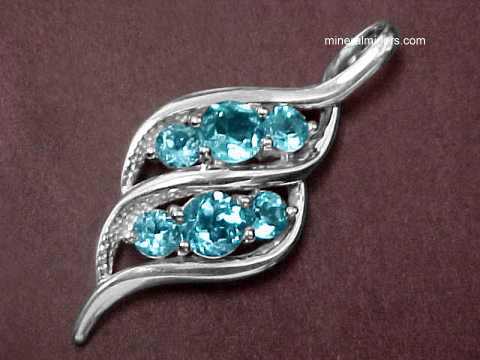
The name 'topaz' was used to refer to any yellow stone in ancient times.
Topaz was first used to describe the mineral that we know today as topaz in 1747 when Henckel
described the Saxony deposits. Even today one often encounters the erronious terms
smoky topaz and madeira topaz being used for smoky quartz
and citrine quartz, respectively. Until the 18th century, the name topaz was often used in refering
to our present day mineral peridot.
The name 'topaz' is thought by many to be derived from the ancient Sanskrit
word tapas meaning fire. Another theory which was first put
forth by Pliny in the first century A.D. is that the name topaz was derived
from the Greek word topazos or topazion meaning to seek, which was the
name of an island in the Red Sea (known today as 'Zeberget', or the 'Island of St. John')
which is thought to have been an ancient source for the gem peridot, but not topaz.
The term imperial topaz originated in Russia in the 19th century, when topazes
with pink tones were discovered there and proclaimed by the Czar to belong
only to himself and the royal family, and others to whom he had given it as a gift.
Topaz was one of the stones in the 'Breastplate of Judgement' of Aaron, described in the bible (Exodus: xxviii, 15-30). In Vedic astrology ( 1000's of years older than western astrology, and still practiced by millions today), topaz is asigned to the planet jupiter. Historically, topaz has been thought to give long life, good looks and intelligence. It is also thought to give protection from poison, disease and sorcery.
Topaz is used as a gemstone. Its perfect cleavage makes it susceptible to being damaged if struck upon a hard surface.
The astrological sign of topaz is Sagittarius.
Topaz is the symbolic gemstone for the 16th wedding anniversary.
Topaz is the birthstone for the month of November.
Topaz is said to aid in meditation and in the manifestation of the desired outcome.
Topaz is also said to enhance one's spiritual potential, to increase
intelligence and creativity, and to impart wisdom (and wealth!). It is
said to facilitate working with other minerals, enhancing the results.
Topaz is said to be a strong healing and rejuvenating mineral,
giving new vitality and good health, and protection against many diseases.
In addition to the above metaphysical properties for topaz, Blue topaz is said to enhance one's communicative abilities, helping to more easily and clearly express oneself.
For more in-depth metaphysical information, see our Metaphysical Books section.
We have a variety of different cuts and sizes available in blue topaz gemstones including extra large giant size collector gems!
Go up to the Top of this Topaz Information page